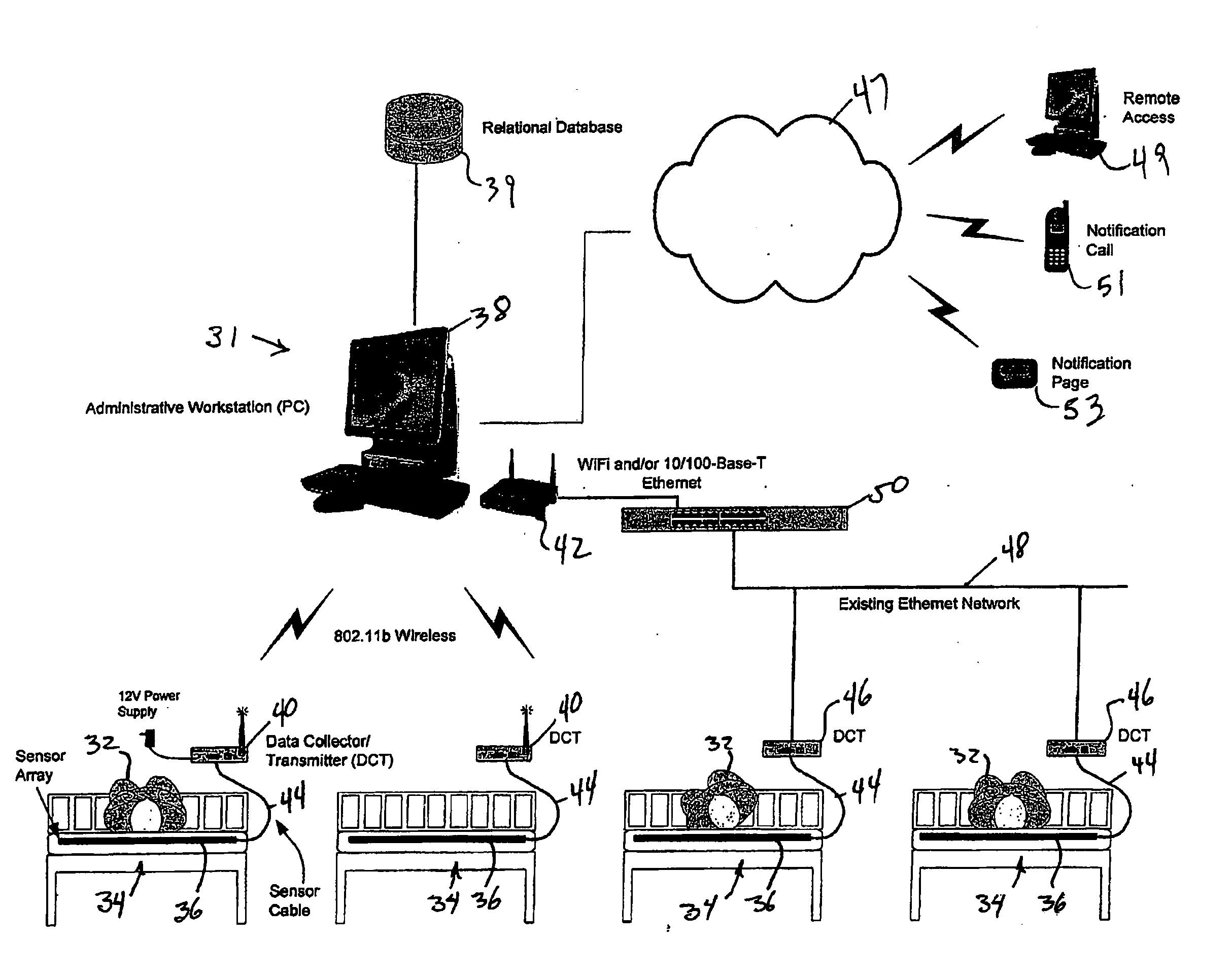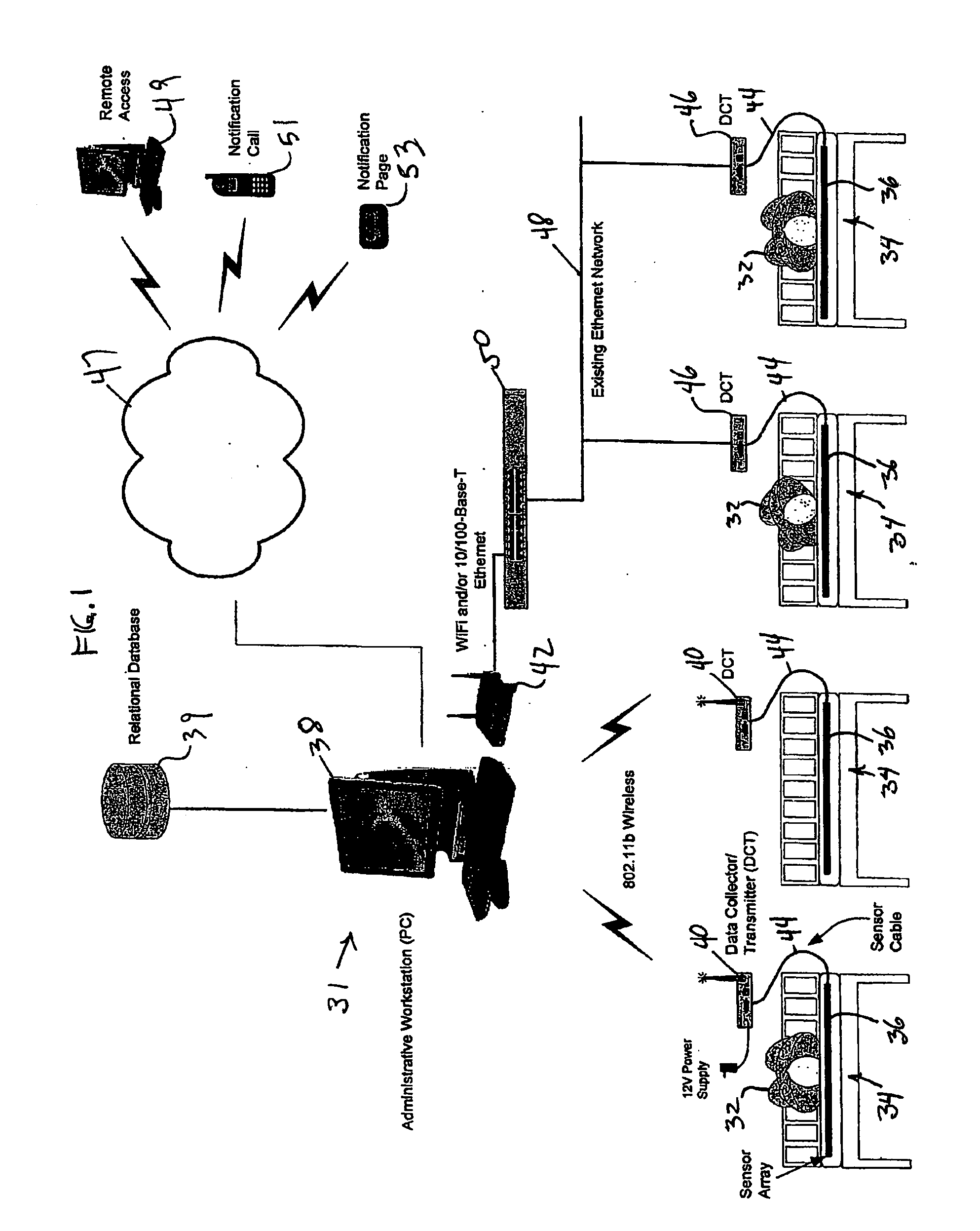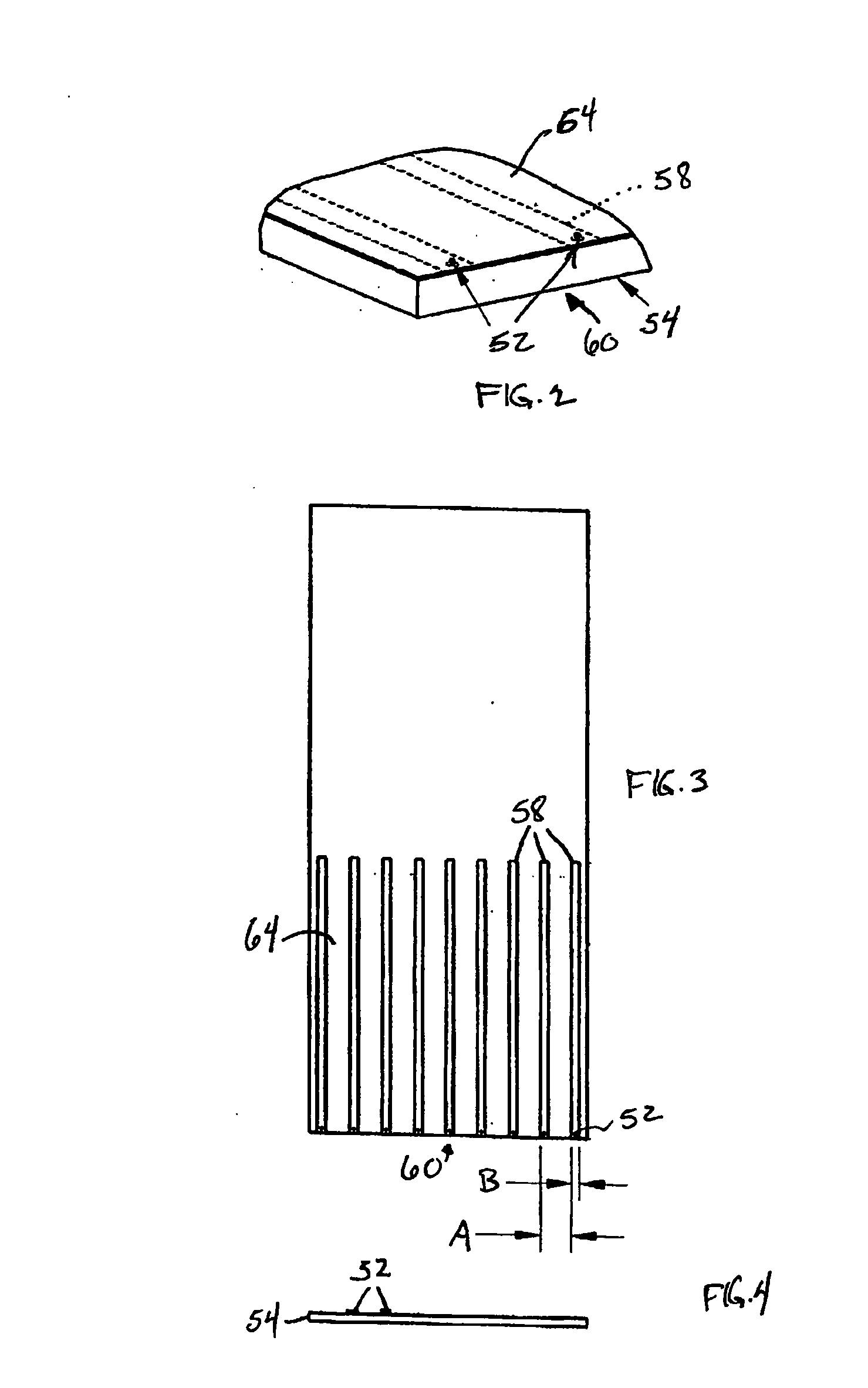Monitoring systems and methods
a monitoring system and system technology, applied in the field of monitoring systems and methods, can solve the problems of severe compromising health, comfort, and quality of life, and subjects are unable to stand or walk from their beds, so as to reduce client costs, limit downstream system and licensing and development costs, and achieve the effect of reducing client costs
- Summary
- Abstract
- Description
- Claims
- Application Information
AI Technical Summary
Benefits of technology
Problems solved by technology
Method used
Image
Examples
Embodiment Construction
[0033] A system 31 for monitoring the performance of a caregiver relative to movement of a single subject 32 or a plurality of subjects 32 is shown in FIG. 1. Illustratively, subject 32 is positioned on a bed 34, but it should be understood that other subject support devices, such as chairs, wheelchairs, or the like, are within the scope of the invention. Accordingly, all of the attributes of the system described herein can be applied to any type of subject support device.
[0034] As shown in FIG. 1, system 31 includes a plurality of beds 34, each having a sensor 36 that is in communication with a central processor 38, such as that which can be found in the computer shown in FIG. 1. The sensor 36 may be a single sensor or preferably a sensor array including a plurality of individual or separate sensor units. The central processor 38 may take the form of other computing devices having the capability of detecting changes in the status of sensors 36 and outputting an alarm, notice or re...
PUM
 Login to View More
Login to View More Abstract
Description
Claims
Application Information
 Login to View More
Login to View More - R&D
- Intellectual Property
- Life Sciences
- Materials
- Tech Scout
- Unparalleled Data Quality
- Higher Quality Content
- 60% Fewer Hallucinations
Browse by: Latest US Patents, China's latest patents, Technical Efficacy Thesaurus, Application Domain, Technology Topic, Popular Technical Reports.
© 2025 PatSnap. All rights reserved.Legal|Privacy policy|Modern Slavery Act Transparency Statement|Sitemap|About US| Contact US: help@patsnap.com



